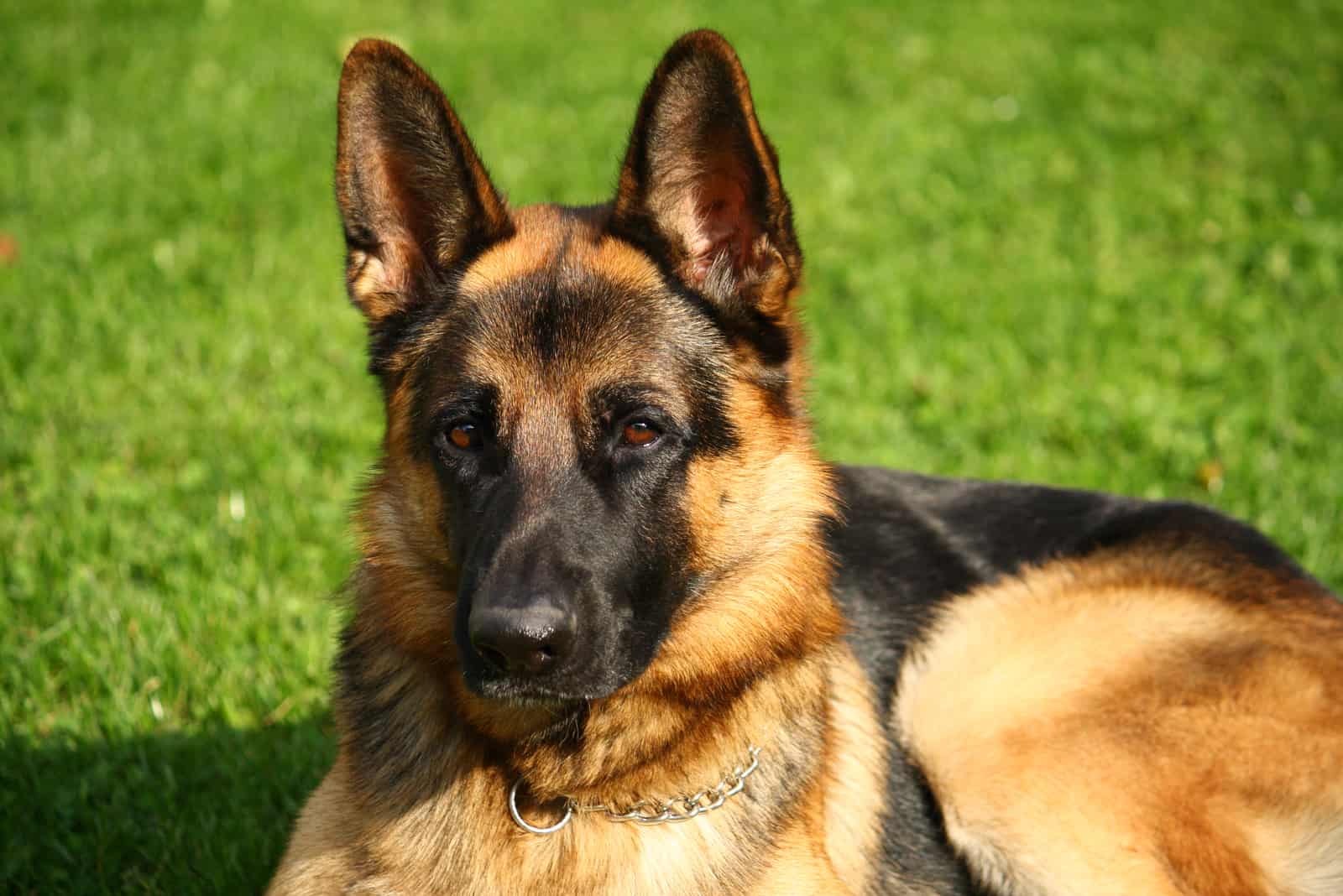German Shepherds are truly some of the most amazing canines out there. When I think of a German Shepherd dog, the first thing that comes to my mind is “a man’s best friend”.
Besides its incredible personality and skills, the German Shepherd is a loving family member that gets along with pretty much everyone.
Not only does this intelligent dog communicate with its adorable puppy eyes and body language, but it also has a few things to say and show with its puppy ears. This is why we want to talk to you about the German Shepherd ears chart.
Now, this article won’t only focus on GSD puppy’s ear position and their meaning, but it will also show how the German Shepherd develops its pricked ears.
For those who don’t know, when they are born, GSD puppies have floppy ears that gradually move upwards as time goes by. During this period, some German Shepherd puppies develop one floppy ear and the other one straight, while in some puppies’ both ears remain floppy.
The German Shepherd ears chart is here to answer the most common questions about GSD puppy ears and how they change; what’s normal and what’s not.
So, let’s get going!
German Shepherd Ears Chart: From Puppy To Adult
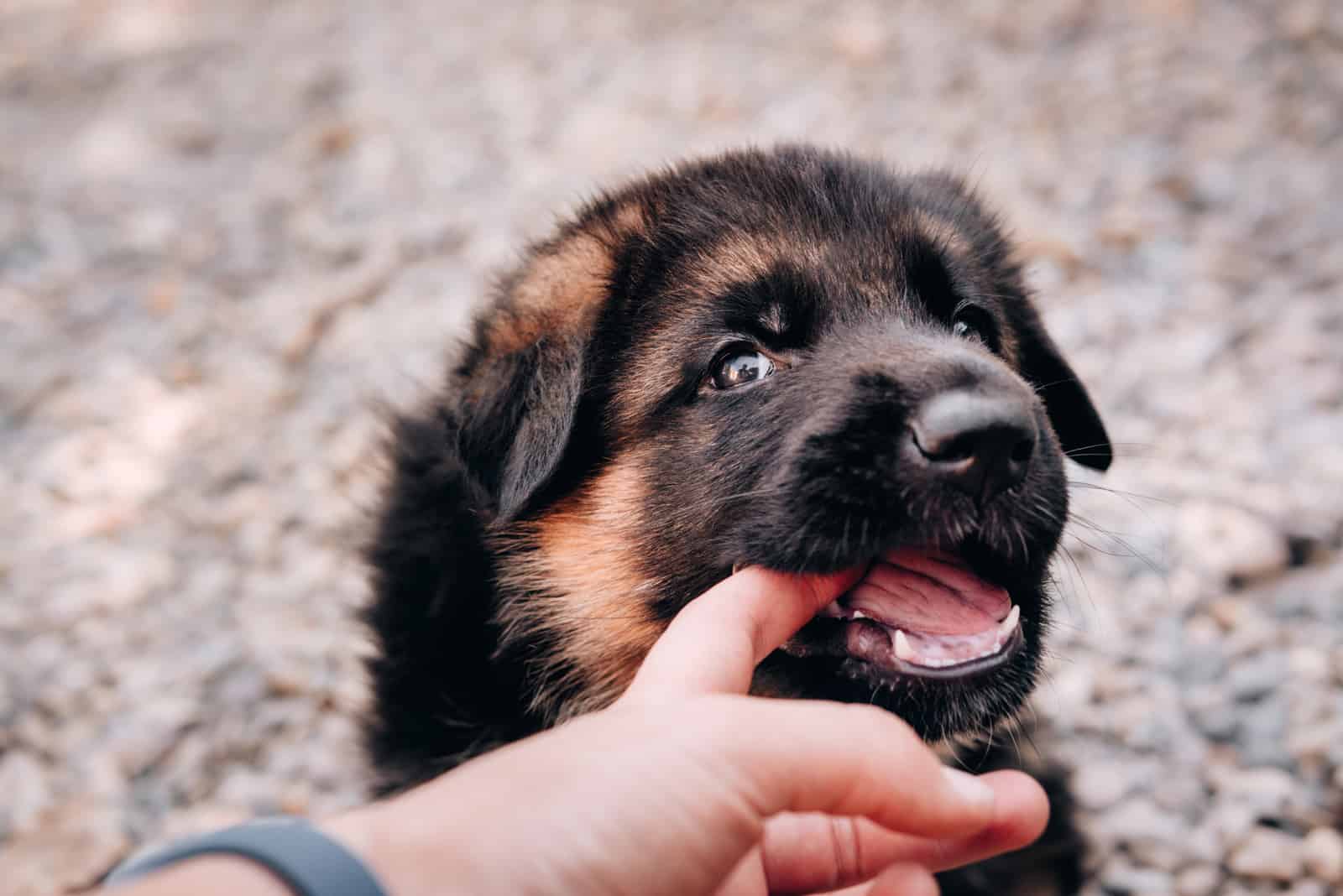
German Shepherd puppies have the cutest V-shaped floppy ears that perfectly sit on top of their adorable head. The tip of their triangular puppy ears is pointed downwards and this normally changes over time.
What you may have probably noticed is that the majority of adult German Shepherd dogs show-off their pointy, pricked-up ears.
So, if you are wondering when your German Shepherd puppy’s ears are going to start picking up, stick around with us and take a peak into our German Shepherd ears chart.
Birth To Three Months Of Age
Newborn German Shepherd puppy’s ears are small, flat, and stay close to its head. There is no reason to be concerned because all German Shepherd newborn puppies have their ears like this. I mean, we can’t expect a newborn puppy to have developed big ears! Don’t worry, the German Shepherd grows very fast and so do its ears.
When they reach three months of age, German Shepherds are already one paw in their teething phase. During the teething phase, GSD puppies have floppy ears that don’t seem to be pricked up completely.
Three To Six Months Of Age
You will see many ear changes in GSD puppies within the period of three to six months of age. After stepping into the fourth month of age, at around 16 weeks of age, the majority of GSD puppies have both ears pricked up.
However, their cartilage is not fully developed, so some GSD puppies may experience their ears going up and down.
Moreover, the ear positions are going to change whenever your German Shepherd puppy changes mood or wants to tell you something.
Six To Eight Months Of Age
During the period between six to eight months of age, GSD’s ears have grown stronger and they are able to stand up on their own.
If you notice that the GSD’s ears are not perking up entirely or that one ear is floppy, then you should contact your veterinarian as soon as possible. The period between six to eight months of age is your last call to help your GSD ear(s) perk up.
This is because the GSD is still in its developmental phase and once it passes the age of eight months, then its floppy ear(s) won’t be able to perk up even with your help.
Eight To Twelve Months Of Age
Congratulations, your GSD puppy now has its signature pricked ears and there is no chance that they are going to go back to being floppy unless there is an ear infection.
The German Shepherd puppy is almost considered an adult now, and its ear cartilage is in its last phase of development. The GSD ear cartilage has become thicker and stronger, carrying the weight of its big, fluffy ears.
At What Age Do German Shepherd’s Ears Stand Up?
Generally speaking, a four to five-month-old German Shepherd puppy’s ears are already standing tall. In some cases, three-month-old GSD puppies have both ears, while some have only one pricked ear.
As we have previously mentioned, eight months of age are pretty much your last chance to try to correct your GSD’s ears. If it is a healthy purebred German Shepherd dog, then it is not normal for its ears to be floppy.
The official American Kennel Club German Shepherd breed standard states that this pooch should have both ears moderately pointed.
What Do My German Shepherds Ears Mean?
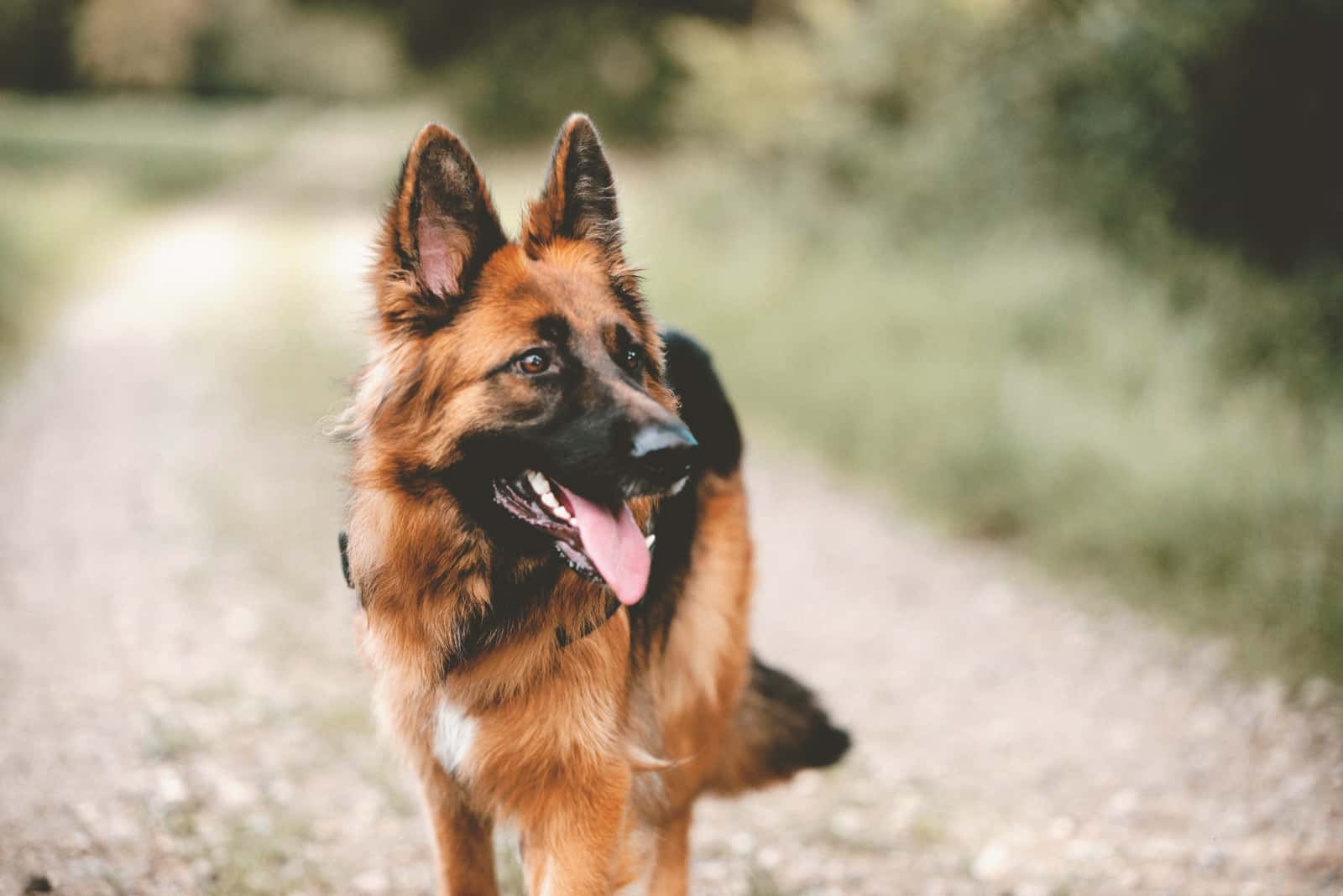
Moderately perked-up GSD ears are what they should normally look like, but when they fall down, then there is possibly something wrong with the German Shepherd dog.
Ears mean a lot in the German Shepherd’s behavior, they show when the dog is feeling cheerful, and when it is upset. So, besides the tail position changes, when observing the German Shepherd dog’s body language, you should also pay attention to its ears.
I know that eyes are the path to one’s soul, but with German Shepherd dogs, I’d say it’s all in the erect ears!
Do All German Shepherds Have Pointed Ears?
Well, in theory, all purebred German Shepherd dogs should have pointy ears, but not as pointy as the ones we see in American Bulldogs that have their ears cropped.
While German Shepherds are not considered dogs with long ears, their ears are pretty big when you compare them with other dog breeds. GSD puppy’s ears are ultra soft and triangular.
When they are small, GSD puppies have floppy ears and by now we know that they straighten up once the cute little GSD puppy reaches three to four months of age.
Their ears have lots of fur at their roots and when you brush your German Shepherd dog, you should not forget the ears too!
So, make sure to invest in a good brush for your German Shepherd puppy.
See Also: 24 Dogs With Pointy Ears That Really Are On Point
Do All German Shepherds Ears Stand Up?
Some German Shepherd will have one floppy ear, some won’t. Same goes for their ears standing up, some will have them like that, and some won’t. So, we can conclude that not all German Shepherds have straight, pointy ears.
But, the majority of them develop perked up ears as they grow.
It all depends on the breeding practice and the way German Shepherd owners treat their dogs. As a responsible owner, you should keep track of the GSD ear development and take action if you notice that one or both of its ears are floppy.
Why Do German Shepherd’s Ears Go Up And Down?
It is normal for your GSD puppy’s ears to go up and down — especially during the teething period which is around three months of age. Comparison-wise, French Bulldogs also have floppy ears when they are small puppies in development.
When they are small, German Shepherd puppies have weak ear cartilage which makes their ears frequently change position. Their ears flip and flop, go up and down, which may drive German Shepherd owners crazy! The majority of GSD owners become extremely worried if everything is okay with their pup.
No need to be concerned because the German Shepherd puppy’s ears flip and flop in this manner all the time when they are young. No one can guarantee that some GSD puppies won’t have these problems because their ears are not strong enough to stand up straight.
What Does It Mean When A German Shepherd’s Ears Go Down?
This can mean a variety of things. Normally, it is not a reason to panic especially if your German Shepherd puppy is in its developmental stage. As long as the puppy is healthy, then there is no need to worry about its floppy ears.
However, if you notice that your eight month old German Shepherd puppy still has floppy ears that are not going upwards, have your vet check it out.
It is normal for your German Shepherd’s ears to go down when the dog changes its mood, but it is not normal that they stay like that all the time.
Why Does My German Shepherd Have Floppy Ears?
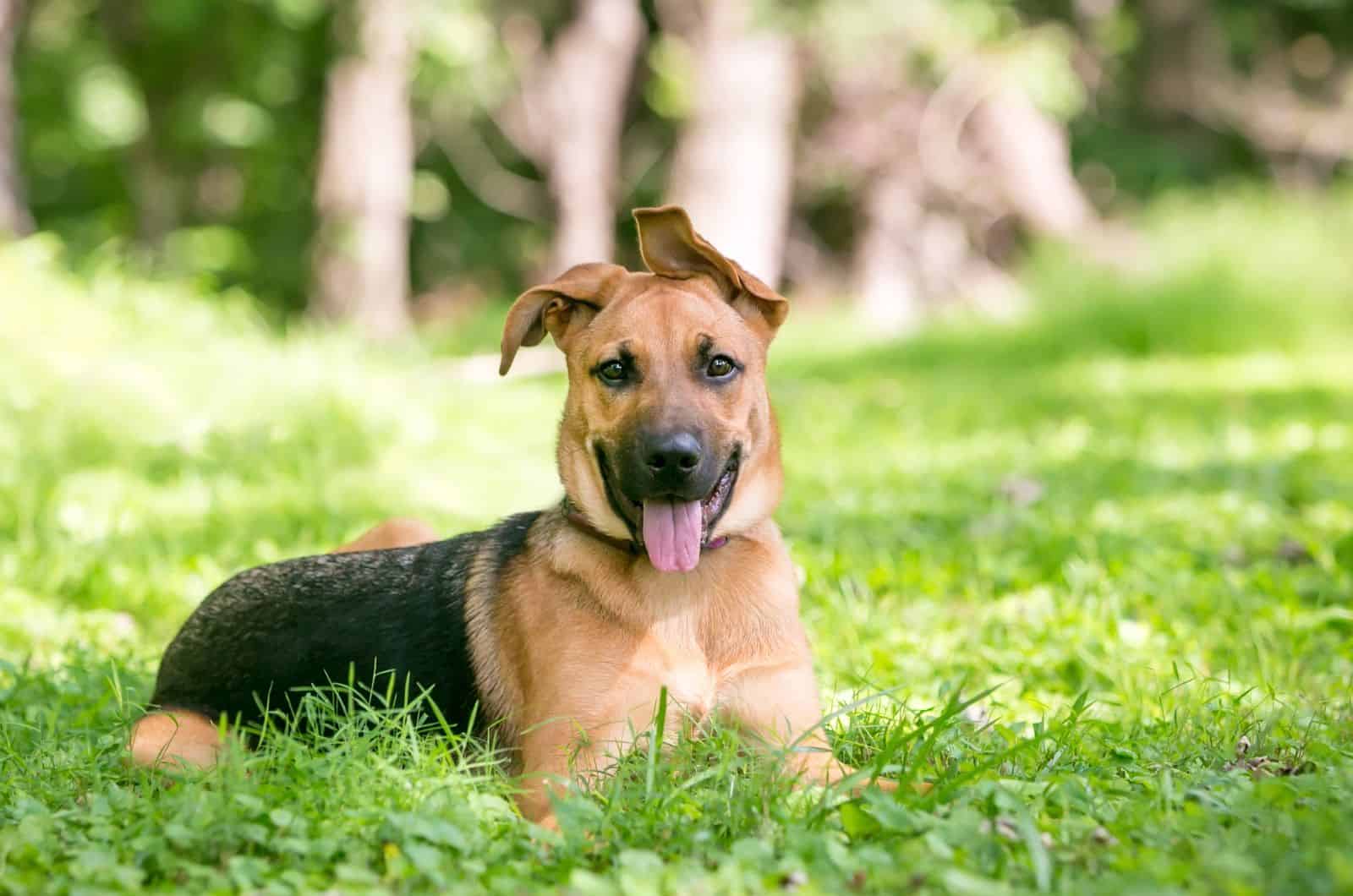
Okay, so, there are several reasons why the German Shepherd may have or develop floppy ears. If your GSD puppy has had its ears straight and they happened to flop all of a sudden, then you will want to schedule a vet’s appointment.
A variety of ear infections can be the main culprit of why your GSD has floppy ears, but bad German Shepherd breeding practices can also be at fault.
My friend had a female German Shepherd called Lucy and her ears never pricked up. We couldn’t understand what was going on because she didn’t have any health problems. After doing some research and genetic background checks, we figured out that Lucy had floppy ears due to bad breeding practices.
Besides health issues, if your German Shepherd puppy has floppy ears it may be that it is not a purebred dog. Many German Shepherd mixes have floppy ears that they inherit from a floppy-eared parent. I mean, take this German Shepherd Pug mix with its adorable floppy ears as an example!
1. Genetic Background
Genetics makes the world go around! Whatever your German Shepherd dog looks like, it is thanks to genetics. Reputable German Shepherd breeders thrive to produce genetically healthy puppies and they do that by crossing only the high-quality German Shepherd dogs.
With a healthy foundation stock, each German Shepherd puppy litter is healthy and inherits the signature GSD looks. Sometimes, German Shepherd dogs with faulty ears mate with “normal” German Shepherds which results in floppy-eared GSD puppies.
This brings us to faulty breeding practices that may be the reason why your German Shepherd’s ears are floppy.
2. Breeding Program
German Shepherd’s floppy ears may be the perfect example of a bad breeding program. Competitive GSD breeders regularly check their breeding dogs for health issues and appearance faults.
They follow the GSD breed standards to produce favorable GSD puppies. If there is a GSD puppy that lacks physical characteristics according to the AKC GSD breed standards, then this dog is not to be bred in the future.
When they are preparing for a new puppy, the majority of aspiring German Shepherd owners expect to get a GSD puppy with straight, perked-up ears, which is how they should naturally look like.
3. Teething Period
As a herding breed, the German Shepherd’s teething and mouthing behavior may be expressed more than in other dog breeds. At three months of age, GSD puppies like to nibble on just about everything, including your feet! This is the perfect time to invest in some toys for German Shepherd puppies — chew toys to be more precise.
Because their growing teeth make them feel uncomfortable, GSD puppies may cry when carrying their toys.
However, this is a perfectly normal dog behavior in GSD puppies, and it is perfectly normal that their ears go up and down during this period. While the ear changes aren’t completely linked to teething itself, they are linked to this specific growth stage of the GSD puppy.
At three months of age, German Shepherd puppies don’t have strong ear cartilage, which makes their ears move quite a lot.
4. Problems In Development
These problems mostly include a lack of calcium and other nutritious components in dog food.
But problems in development may also be linked to dirty ears in German Shepherd puppies.
Whatever it may be, you have time until eight months of age to try and correct the ear position. In many cases, German Shepherds older than eight months of age fail to have their ears put in a breed-specific position.
Poor Ear Hygiene During Puppyhood
Let’s talk about ear hygiene in German Shepherd puppies. Their ears are fluffy, soft, and floppy, especially if you own a long-haired German Shepherd. The floppiness of a German Shepherd puppy’s ears may make them look cute, but it poses a risk of developing ear infections.
This is because the ear canal is practically closed — the floppy ear of the GSD puppy completely covers the ear canal which makes it the perfect breeding ground for microorganisms.
Moreover, such a closed ear canal may mask the presence of ear wax buildup which can make German Shepherd owners forget to clean their dog’s ears. Unlike humans, dogs have black ear wax and if you happen to notice black gunk in your German Shepherd’s ears, then you should clean them immediately.
Ear plucking is a simple yet effective procedure that you can do to help your German Shepherd puppy get rid of wax buildup. But, before you start, make sure to call your veterinarian for detailed instructions and have them show you how it is done.
Your German Shepherd puppy will do well if you clean its ears at least once a month. But, some GSD puppies produce more ear wax than others, so you may want to monitor their ears in case they need frequent cleaning.
Don’t confuse natural dog’s ear wax buildup from a mite infection (we’ll get to that later).
Unbalanced Diet During Puppyhood
Not only does an unbalanced diet cause major skeletal problems in German Shepherd puppies, but it also causes floppy ears and dull hair. Without dog food components that are crucial for a GSD puppy’s growth, it can not develop its signature appearance.
Feeding your German Shepherd puppy high-quality dog food is important for its overall health and growth. Not only does a balanced diet and quality GSD food make your puppy grow into a strong adult dog, but it also keeps its immune system resilient to diseases.
With a lack of calcium and vitamin C, the German Shepherd puppy’s ear cartilage can’t develop properly. As a result, the GSD puppy’s ears remain floppy for the rest of its life.
If you notice that your German Shepherd puppy’s ears are not improving after feeding it a high-quality diet, then you should call your veterinarian.
They may offer you some dietary supplements that you can give to your GSD puppy to help strengthen that ear cartilage!
Why Have My German Shepherd’s Ears Flopped Suddenly?
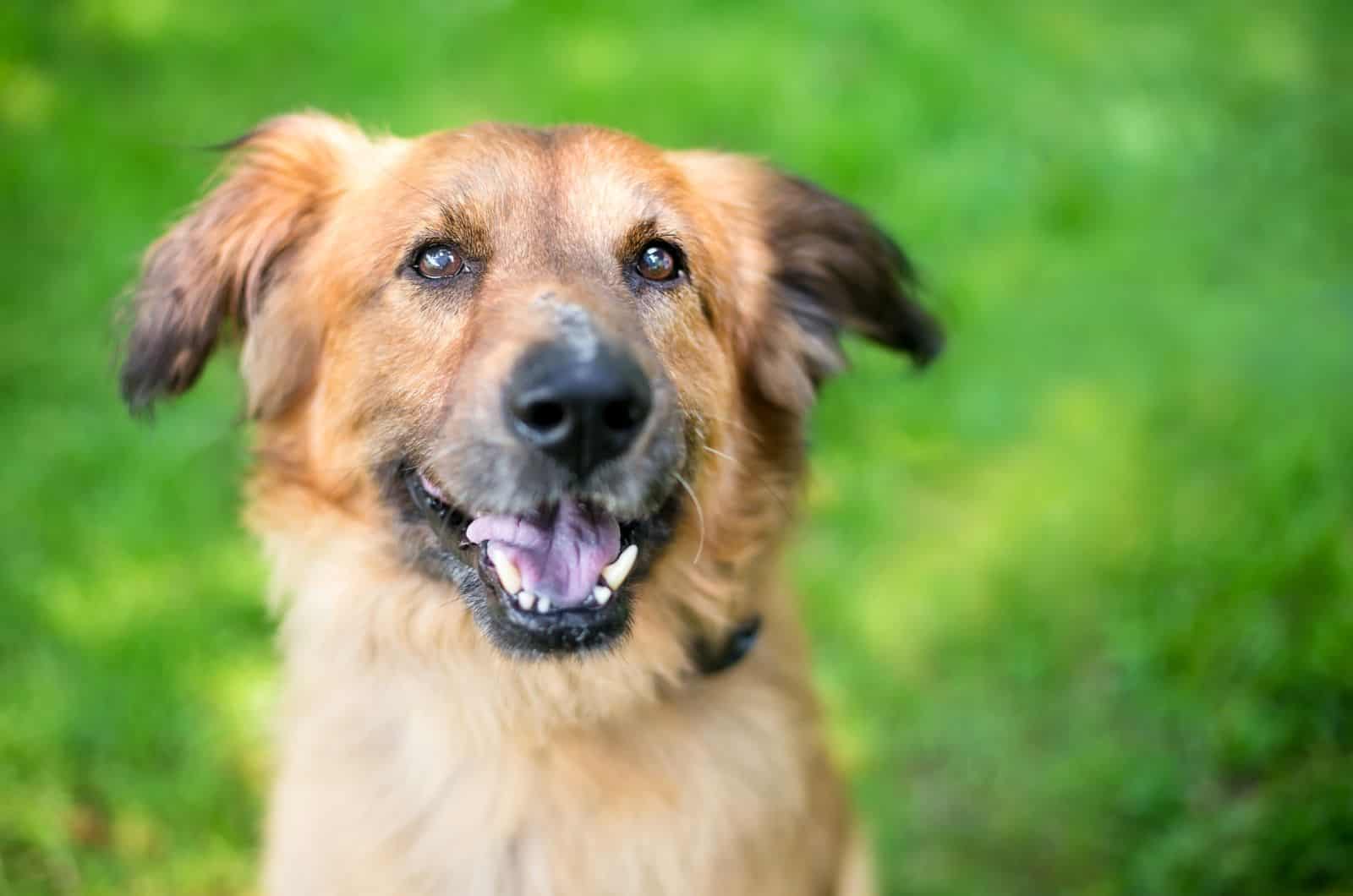
If your German Shepherd puppy has had straight, pointy ears for most of the time and they suddenly dropped, then it may be due to health problems.
The sudden drop is noticeable on one or both of the German Shepherd’s ears. Here is what may be causing it.
1. Bacterial Infection
Back there we were talking about a German Shepherd puppy’s ear canal being closed due to its floppy ears. Despite floppy ears being a perfect environment for pathogens, erect ears can also become infected with pathogenic bacteria.
The most common culprit of bacterial ear infection in German Shepherd dogs is a pathogenic bacteria called Staphylococcus pseudintermedius. The bacteria can be found in the outer ear but it can also get deep inside the ear canal and cause Otitis interna, which is inflammation of the internal ear canal.
Now, many bacterial infections smell really bad and you may notice that your German Shepherd puppy is scratching its floppy ear. Not only are its ears down, but they are also red and inflamed.
If you suspect that your German Shepherd puppy is suffering from a bacterial ear infection, then you should take it to the vet. He or she will do an ear swab to determine whether or not your German Shepherd puppy has a bacterial ear infection.
Note that this infection can cause one or both GSD ears to go down.
2. Parasitic Infestation
The most common reason why your German Shepherd’s ears are suddenly down is due to a parasitic infestation. And the most common parasitic culprit is an ear mite called Otodectes cynotis which can live in the ears of many other species (rabbits, cats, ferrets).
These pesky ear mites can be barely seen by the naked eye. When you clean your German Shepherd puppy’s ears and notice black dust-like particles, you may suspect that your dog is infested with ear mites. These parasites can be easily noticed in white German Shepherds.
Your German Shepherd’s ears are going to be dry and inflamed. The constant scratching won’t do good because it will make wounds within the outer and inner ears. Open wounds and an unsanitary ear environment pose a threat to developing a serious bacterial ear infection.
The ear mite infestation can be unilateral and bilateral, which means it can affect either one or both German Shepherd’s ears.
This type of parasitic infestation often affects German Shepherd puppies and adult dogs in shelters and kennels. So, this is why it is crucial for you to find out where you are getting your new furry friend from – always search for a reliable source.
3. Physical Trauma
If your German Shepherd dog happened to hurt its head or ears, then one or both of its ears may suddenly drop. Depending on what caused the trauma, the German Shepherd’s pointy ears can change position and appearance.
For example, if the German Shepherd dog happened to have been bitten by another dog or got a small splinter stuck in its ear, then the affected ear will have puncture wounds and even become infected. This will change the overall appearance of the GSD ear.
If it was a dull trauma that did not cause any open wounds, then your German Shepherd’s ear may become swollen and heavy, and that weight will drag it down.
Do You Have To Tape German Shepherds Ears?
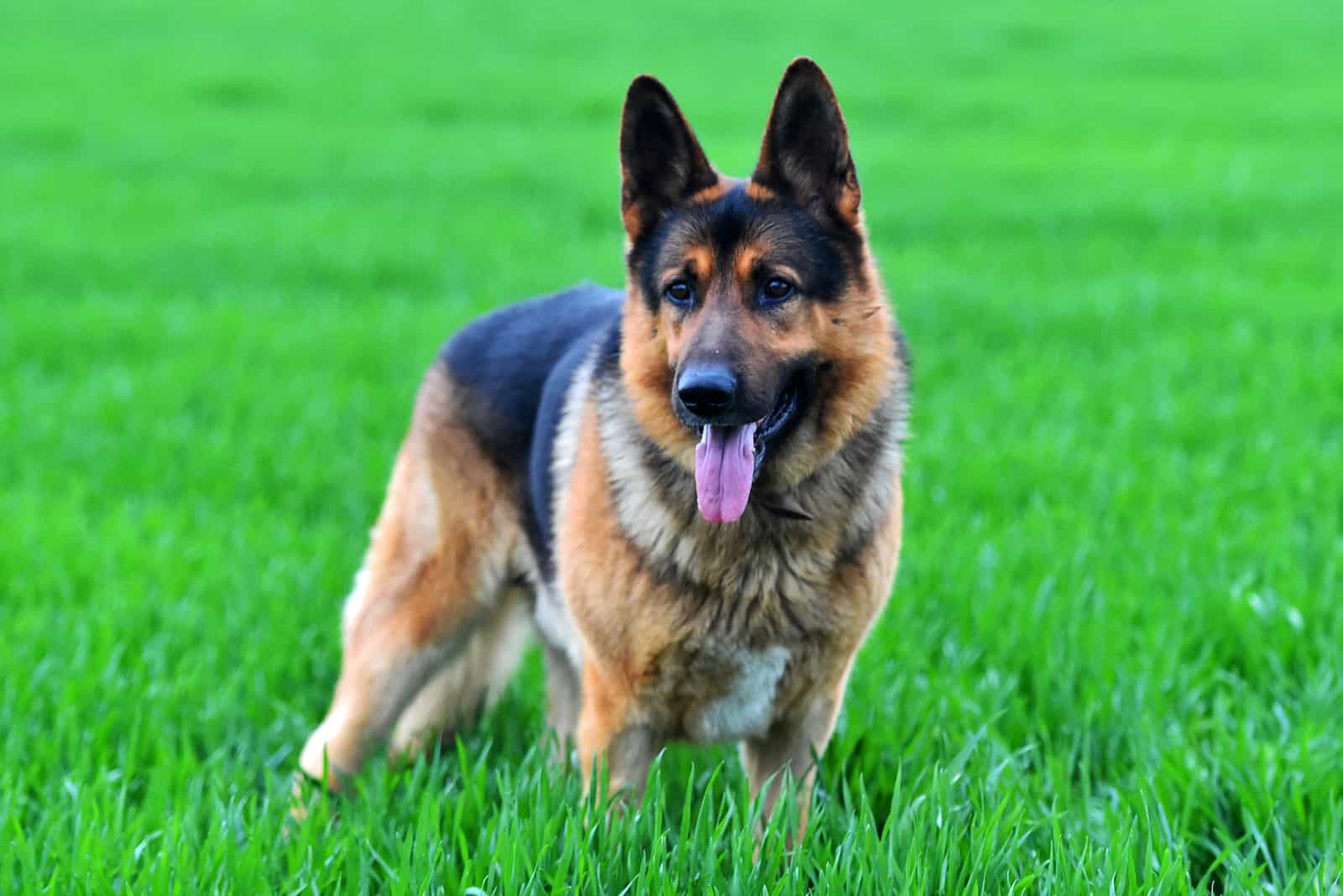
There are times when their ears are stubbornly going down and you have to step in to prevent them from remaining floppy.
It is not necessary to tape your German Shepherd’s ears if they have been doing up and down during different developmental stages. The only period when you should worry and actually start correcting German Shepherd’s ears is when they reach eight months of age. Until then, there is no need to worry too much.
Many first-time German Shepherd owners are very impatient when it comes to their dog’s ears. I suggest that you wait for your German Shepherd’s ears to grow and perk up. This won’t happen overnight even after you tape them.
You should not tape your German Shepherd’s ears before its teething period — it is too soon. Instead, wait for its puppy teeth to grow and then decide on whether or not you are going to tape its ears.
What Is The Best Way To Tape German Shepherd’s Ears?
Okay, hear me out. Don’t start taping your GSD pups ears on your own. Make sure to talk to your veterinarian and ask for tips and tricks on how to properly tape your GSD ears. The vet will also tell you if this is necessary or not. If you take your German Shepherd puppy to the vet, he or she will clean and prepare its ears for taping.
Remember that GSD ears must be clean and dry before taping!
This procedure is not painful for German Shepherd puppies, but it can be quite uncomfortable. Note that ear taping in dogs is not the same as ear cropping. This is not a surgical procedure, it is just sticking white surgical tape around the GSD’s ears and keeping them in a standing position.
So, the best way to do it is to gather all the ear taping supplies that you will need:
• White surgical tape
• Women’s foam hair rollers
• Popsicle stick
First, you will take off the plastic from the middle part of the foam hair rollers. Then take the plastic-free foam hair rollers and place them on the inner side of your GSD’s ear. Make it so that it seems that the ears are wrapped around the foam and that they stay straight.
Then take your white surgical tape (never use duct tape or any other tape), and start taping in circles around the ears, covering the foam.
After you are done with taping, take your popsicle stick and place it on top of the erect ears, connecting the tips of both ears horizontally.
Your German Shepherd puppy may look like an extraterrestrial for a while, but this will help correct its ears. Say bye to those stubborn floppy ears!
Do German Shepherds Get Their Ears Cropped?
No, they don’t! Not only is ear cropping in dogs cruel, but it is also unnecessary (it is a cosmetic procedure).
Unlike Bully ear cropping, which has become the signature look of Bullies, German Shepherds would lose their signature looks if their ears are cropped. I mean, look at their fluffy, erect ears! Who would want to crop them? No one!
To this day I have never seen a German Shepherd with cropped ears and I hope that I never will. The only reason why you would crop a dog’s ears is if it had irreversible damage on them that puts its health in danger.
Besides that, German Shepherds with cropped and floppy ears are disqualified from all dog shows and competitions.
Why Do German Shepherds Prick Their Ears?
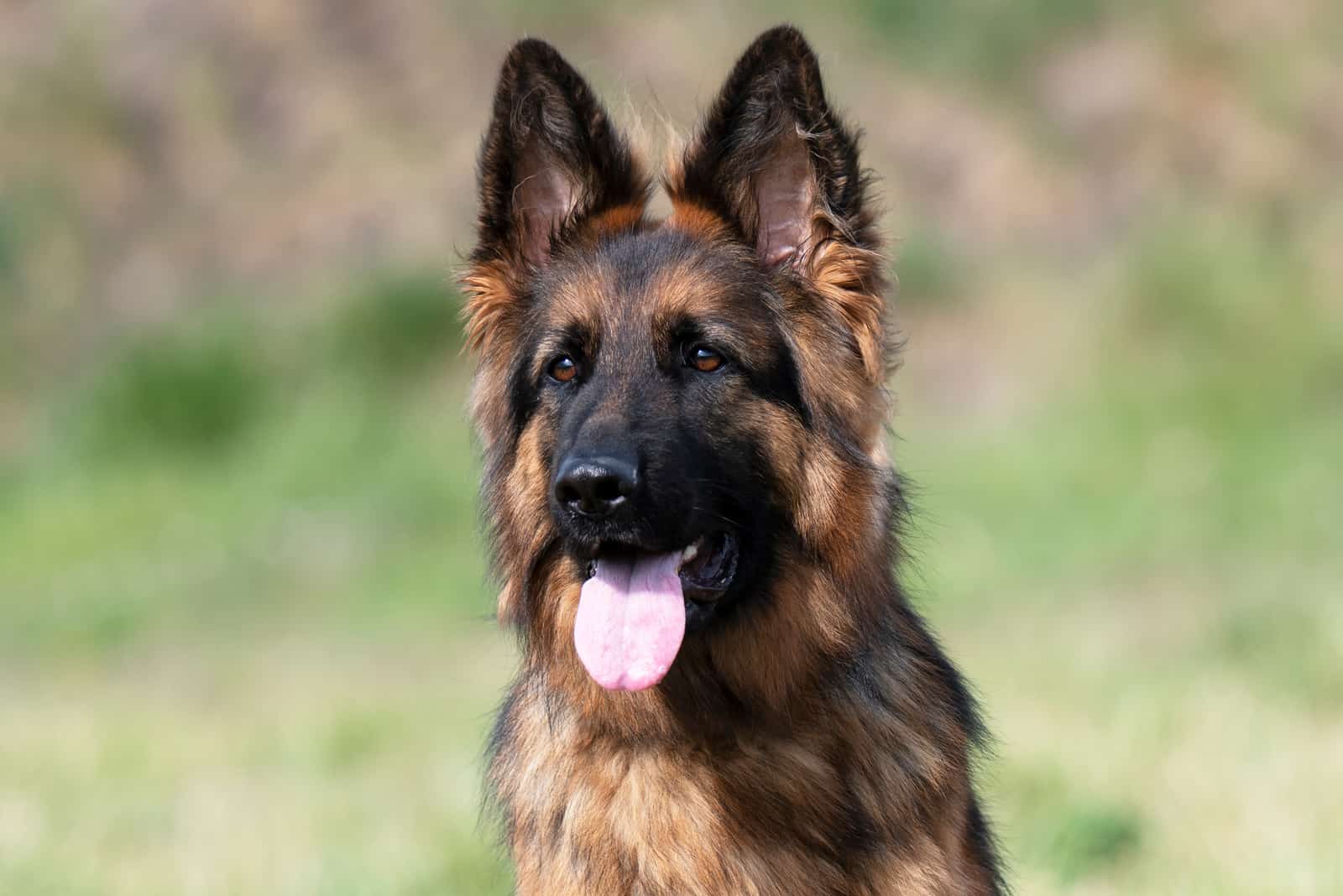
One of the ways German Shepherd puppies want to tell you something is by communicating through body language which includes ear movements and tail movements as well.
So, when your German Shepherd puppy is feeling curious or alert, its ears are going to prick up as high as they can. They will stay straight and pointed upwards when the GSD puppy is excited.
Alongside pricked-up ears, you will notice that your German Shepherd puppy is wagging its tail like crazy! This pooch is super excited!
German Shepherds prick their ears when they suddenly hear something. In addition to that, they tilt their head in the cutest manner!
However, pricked-up GSD ears may be a warning. Aggressive German Shepherds’ ears flare up when they are about to attack if they feel threatened.
If you think that might be the reason why your German Shepherd’s ears are pricked up, then you should look for other signals such as an open mouth with teeth showing, or growling and barking at nothing.
Why Do German Shepherds Put Their Ears Back?
It is believed that, like most dogs, German Shepherds position their ears back to show negative emotions such as anxiety, stress, or fear. But, this does not have to be the case all of the time. Similar to pricked-up GSD ears, you should pay attention to their overall body language.
A nervous, afraid, or anxious German Shepherd dog will keep a low stance, its ears are backward, and its eyes are wide open.
Keep in mind that each German Shepherd puppy is unique and we can be 100% sure that the backward ears position means all these negative emotions. Some German Shepherd puppies put their ears this way when they feel excited!
If you notice that your German Shepherd dog starts acting weird, then you should pay attention to its ear and tail position, as well as its whole body posture.
Final Thoughts

We can’t argue that the German Shepherd’s ears make this dog look extremely cute and goofy, especially when they are going up and down. These floppy ears really add to the cute German Shepherd puppy’s appearance.
However, the German Shepherd’s ears should not remain floppy. Not only is this considered a flaw according to the American Kennel Club, but it also shows bad practice and might indicate health problems. We are not talking only about the German Shepard’s appearance — of course, the GSD looks amazing with both ears perked up, but it also looks cute with floppy ears.
But, floppy ears mean weak cartilage, which may be caused by underlying health issues or nutritional deficits. Either way, you should pay attention to the German Shepherd ears chart and keep track of your GSD’s fluffy ears.
Related Content
Why Your Dog’s Ears Are Cold And What You Can Do About It
Why Do Dogs Lick Other Dogs’ Ears? Here Are The Answers!
